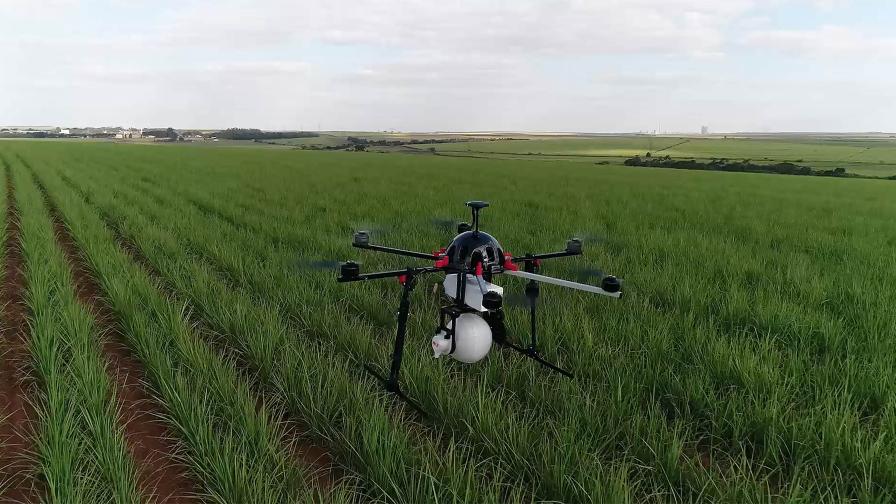4 Questions Answered on the U.S. Crop Protection Outlook

Prochaska
Kline & Co.’s Joe Prochaska, project manager for the Agricultural/Specialty Pesticides Practice, discussed his outlook for the U.S. crop protection market with FCI:
1) How do you expect the 2014 U.S. crop protection market to perform compared to 2013? Will the trend of higher glyphosate prices driven by weed resistance and higher manufacturing costs continue this year?
I expect the 2014 market will remain flat or decrease slightly compared to the previous year. We had a late start to the season, and manufacturers have already reported notable declines in their quarterly results. Sales have picked up in the second quarter so it will be interesting to see how the year turns out.
At the start of the year, there was a high inventory of glyphosate within the channel and many growers committed to purchasing prior to the spring planting season. The cold weather delayed spray applications of glyphosate and as a result one or two applications did not get on the ground. The demand just wasn’t there for new product and, as a result, glyphosate prices have remained flat and manufacture sales of glyphosate are down significantly.
Corn acres planted are expected to decrease 4% while soybean acres are intended to increase 6%. This shift in planted acreage from corn to soybeans may have a decrease in demand for the insecticide and fungicide product segments.
2) Your recent report stated that weed resistance problems pushed aside the biological market last year – can you please comment further?
The herbicide market grew over 13% in 2013 with a significant portion of this increase being the result of growers targeting difficult to control weeds. For example, herbicide use rates increased 10% to 20% during the year to control these resistant weeds. At the same time, the biological crop protection market continues to grow and complements the manufacturers focus on yield and productivity. A lot of interest as well as dollars have been invested in this market. Examples include Bayer’s acquisition of AgraQuest, Syngenta acquiring Pasteuria Bioscience and BASF acquiring Becker Underwood in 2012. My take on this market is that the major research-based manufacturers are still rolling these acquired businesses and newly developed products into their global product portfolios and developing this new business into their strategic marketing plans. These companies face business decisions which come with operating on a global scale and include manufacturing, registration, logistics and R&D costs. For instance, Bayer recently announced it is building a new biological plant manufacturing facility in Germany to meet its growing global demand of its biological products. There are currently a number of biological products being used that work tremendously and are being adopted more and more by growers each year. I believe in the next few years we’ll see an extensive number of new biological products in the market which may be used alone or combined with new chemistry.
3) How dramatically has weed resistance changed U.S. chemical use trends? What types of formulations are growers adopting to circumvent resistance, and what types of formulations are you looking to become big sellers as manufacturers develop new products with multiple modes of action?
The first reports of weed resistance in the United States occurred as early as the 1950s; however, resistant species of weeds to pose a serious threat to agriculture was first spotted in a Delaware soybean field in 2000. By 2005, the path of weed resistance reached 17 states in the Midwest, northeast, and southeast with five main species of weeds including, marestail, waterhemp, giant ragweed and johnsongrass and common ragweed. In 2009, the topic became a serious discussion within the trade and by 2013 published reports of over 50 herbicide-resistant weed species had been confirmed covering 27% of all crop acres planted in the United States.
Less than a decade ago, growers began mixing their own unique blends of herbicides to target difficult to control weeds in their fields and manufacturers responded by providing new products and chemistry developed to target these weeds. Initially these products were marketed to be used in conjunction with glyphosate or glufosinate, particularly older chemistry marketed by the generic companies. A next generation of products arrived in the market which contained two active ingredients to target two modes of action with the plan of killing the weed. As weeds became resistant to multiple modes of action, manufacturers needed to raise the bar and soon developed products containing three modes of action to target resistant weeds. Companies soon began using creative marketing approaches to tackle this issue. R&D collaborations were signed among manufacturers to align themselves with another company in need of their chemistry or vice versa. Marketing agreements were also made to utilize the strength of combining products successful in targeting weed resistance. For example, through its Roundup Rewards platform, Monsanto began partnering with other manufacturers to co-market Roundup to be used with its partner’s product, specifically targeting the cotton and soybean markets.
In addition to using combination products that target more than one mode of action, growers are incorporating a diversified weed management program. Such a program includes using residual herbicides to reduce the number of glyphosate applications and applying herbicides in the fall. Growers are recognizing that fall herbicide applications can be an effective tool for controlling winter annual weeds, resulting in warmer, drier seedbeds and improved seed-to-soil contact.
Crop protection manufacturers are also working on the glyphosate resistance problem by preparing to launch a whole new generation of herbicide-resistant crops for growers to utilize.
Syngenta recently announced a new herbicide containing four active ingredients and will offer pre- and post-emergence residual weed control in corn. The product will be marketed as Acuron and is anticipated to control over 70 broadleaf weeds and annual grasses.
Bayer CropScience and Syngenta are both developing biotech soybeans with resistance to the HPPD-inhibiting class of herbicides as well as glufosinate and glyphosate. This system is expected to be launched by 2015 or later.
BASF will be introducing its Engenia brand of herbicide which contains a technologically advanced dicamba formulation that provides an additional site of action for control of broadleaf weeds in dicamba-tolerant crops. BASF has collaborated with Monsanto with its Engenia herbicide where growers will utilize Monsanto’s dicamba-tolerant products marketed as Roundup Ready 2 Xtend soybeans and Bollgard II XtendFlex cotton. Both companies plan to introduce its dicamba-tolerant system beginning in 2015.
Dow AgroSciences’ Enlist Weed Control System is expected to enter the market later this year and includes Dow’s own biotech seed trait modified to tolerate its new herbicide, Enlist Duo. This herbicide contains a new formulation of 2,4-D combined with glyphosate. This new formulation contains 2,4-D choline, which offers low volatility, reduced drift, decreased odor and improved handling (referred to as Colex-D Technology).
4) What do you think the response will be to Dow’s Enlist Weed Control System which is scheduled for approval this fall – is this a game-changing product?
Dow’s Enlist system has received a lot of publicity in the trade and I expect the product to perform up to its expectations. It will be up to the growers to make this decision as various factors may come into play to utilize this new technology. The Enlist weed control system will not be for everyone; however, as growers experience more issues with resistant weeds they will be more likely to adopt these new systems into their crop input decisions. These decisions are all important factors in reaching their goal of producing a higher yield while eliminating previous issues such as weed resistance.
Overall, I would say this technology has very good potential to capture a significant size of the herbicide resistant market.






